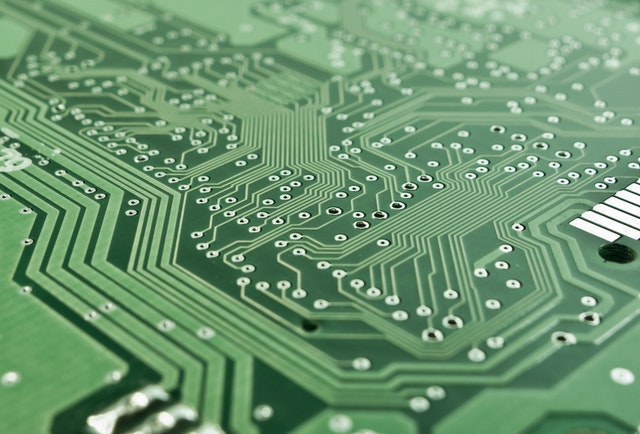The AMD Ryzen 7 5800X with Zen 3 architecture is the new 8-core, 16-thread processor that replaces the 3800X of the previous generation. Together with the substantial improvements in the architecture, this CPU increases the maximum frequency of its predecessor by 200 MHz and is close to 600 points in Cinebench R20.
Check which one is best on our details review of best cooling for ryzen 7 5800x on Desktop Man
A 7nm beast that will fight head-to-head in gaming with Intel’s 9900K and 10700K. Will it beat them? On paper this is how it should be, or at least keep up, but where it does exceed them is in gross performance with its 19% increase in IPC compared to the previous generation. Thinking of treating yourself this Christmas? Well, don’t miss this analysis!
Before continuing, we thank AMD for the trust placed in us by giving us this processor for review.
unboxing
Well, like any AMD processor of this generation and the previous ones, the AMD Ryzen 7 5800X comes using a flexible cardboard box of the same size as its brothers. This box has a striking exterior decoration with the distinctive AMD Ryzen and a very large “7” specification. There are no more features, but on one side we have an opening that allows us to see the IHS of the processor to know exactly what the model will be.
We proceed to open this small box to find it almost empty. As no thermal solution is included , the hole is occupied by an “X” shaped cardboard element that is responsible for holding the CPU vertically. This in turn will be inside a transparent semi-rigid blister along with the identification sticker. Along with them, only the basic documentation for the user will come.
Design and packaging
This AMD Ryzen 7 5800X is presented to us as the natural replacement solution for the previous 3800X. But it does so with a notable price increase of 65 euros compared to the previous model on the day of its release in our country, that is, 410 euros compared to 475 euros for this processor. This will benefit the blue brand, since the Intel i7-10700K is found for a price of 370 euros, being a significant saving. The choice will depend on the main use that we are going to give the CPU and its performance in games , since Intel CPUs are not easy to beat in this area.
We will make these reflections at the end of the analysis, and it is time to give the CPU an external review in search of news. And the truth is that at first glance there are none, since it is presented to us with exactly the same measurements and useful area as the previous generation. As you know, these Ryzen 5000 continue to use the AMD AM4 socket with PGA (Pin Grid Array) format and 1331 gold-plated contacts directly on the CPU for another year.
Meanwhile, the socket will be the female connection, with a lever that, after closing, fixes the CPU to the plate previously inserted with zero force on it. We must take into account that these processors will only be compatible with boards equipped with AMD X570, B550 and A520 chipsets, at least for now. The previous ones are discarded despite having the same socket.
In the upper area we have an IHS or encapsulation made of copper and aluminum with a silver finish and screen printed with the CPU specification in question. This takes advantage of practically the entire CPU substrate to store two chiplets . Unlike the most powerful CPUs, here we will have a die for the 8 cores and another for the cIOD traditionally called north bridge.
To ensure proper heat transfer to the heatsink that we incorporate, the IHS is welded to the core die . In turn, it will be glued to the substrate in a consistent way by means of resin or some similar compound. In the detailed captures you can see the edges with that compound applied in a not very orthodox but effective way. This AMD Ryzen 7 5800X is not going to include a thermal solution , so the ideal is to acquire a heatsink that exceeds 120W of TDP to be left over. Or a 240 mm liquid cooler , which will be more than enough in case of overclocking if the unit allows it.
Zen 3 architecture and specifications of the AMD Ryzen 7 5800X
The leading architecture in the AMD Ryzen 7 5800X will be Zen 3 Vermeer , which continues to use TSMC’s 7nm manufacturing process . But in this new iteration what is intended is to improve lithography thanks to a DUV or Deep Ultraviolet process. With it, it is intended to improve consumption by 10% and increase the density of transistors by 20% compared to the previous generation. This will allow for higher clock speeds and a noticeable IPC increase of up to 19% as we are seeing on all tested CPUs.
This unit will have a count of 8 physical and 16 logical cores , which implies the use of SMT mode for processes and threads. In this case, the internal architecture has undergone important modifications with the aim of simplifying it and improving communication between the different computational elements. Now each CCD (Core Chiplet Die) will have only one CCX (Compute Complex) instead of two. So each CCD has 8 physical cores inside, all of them communicated in a more direct way to the cache memory.









































